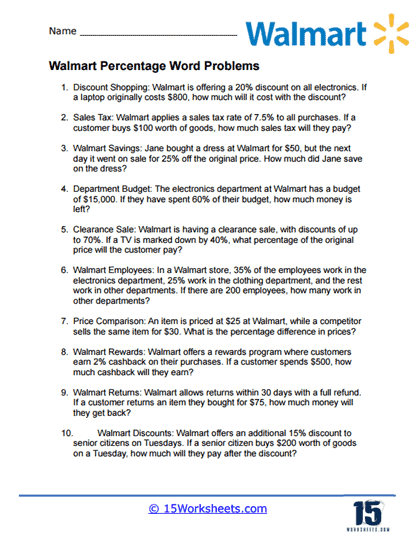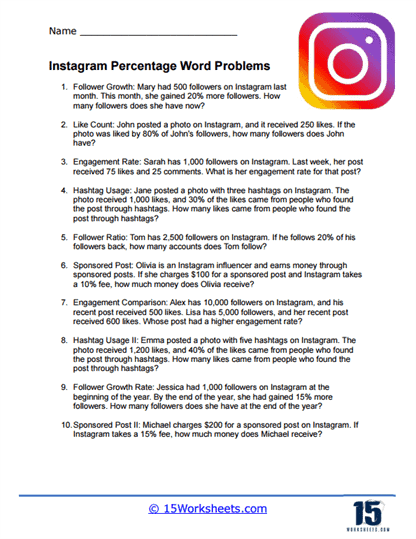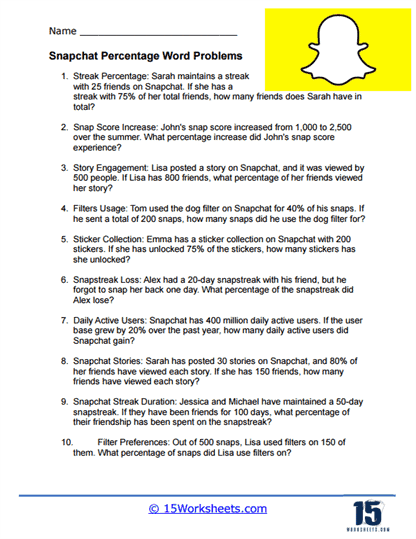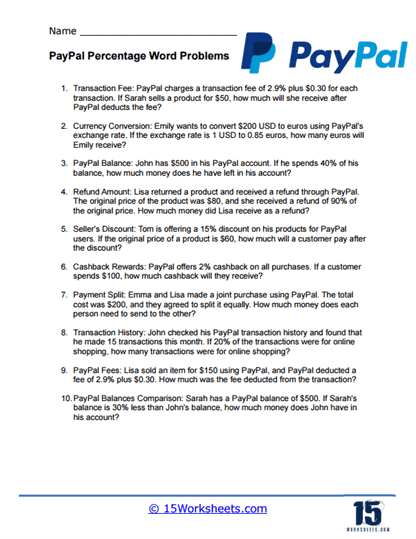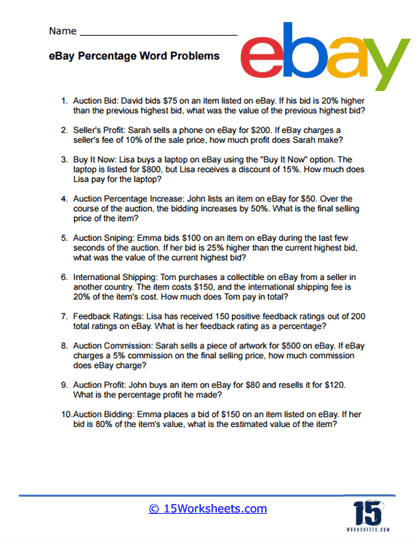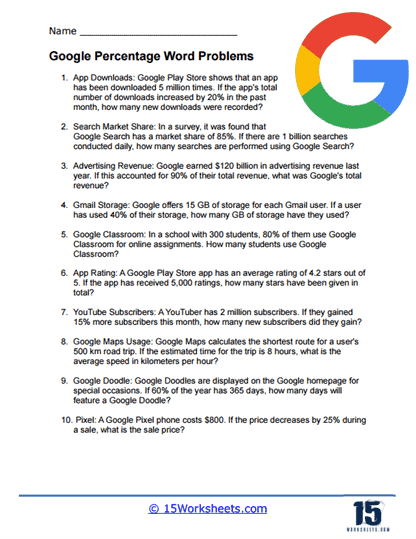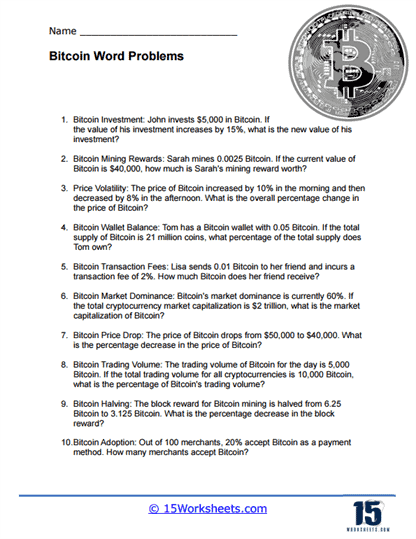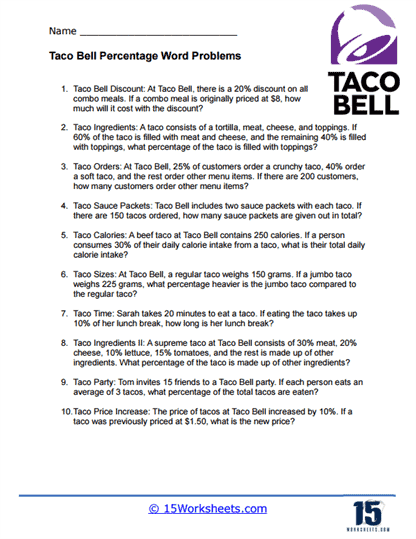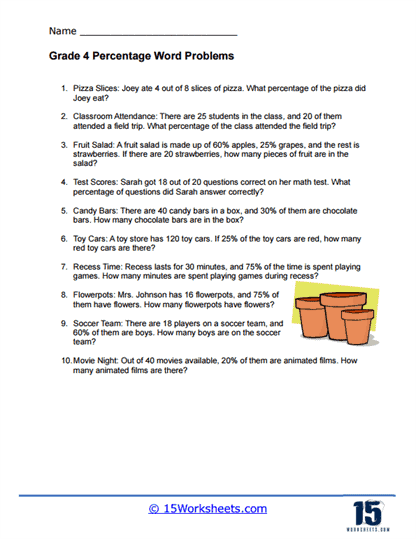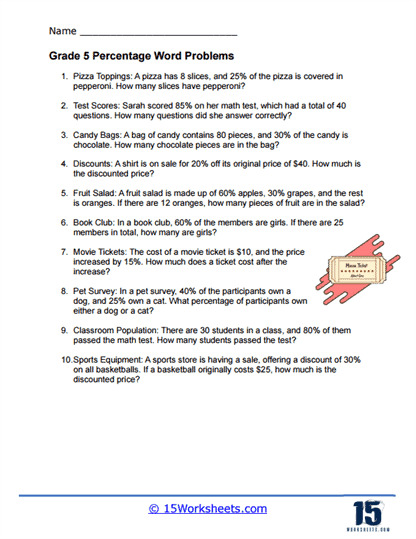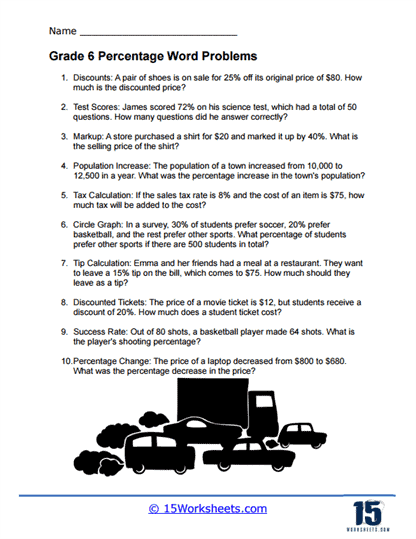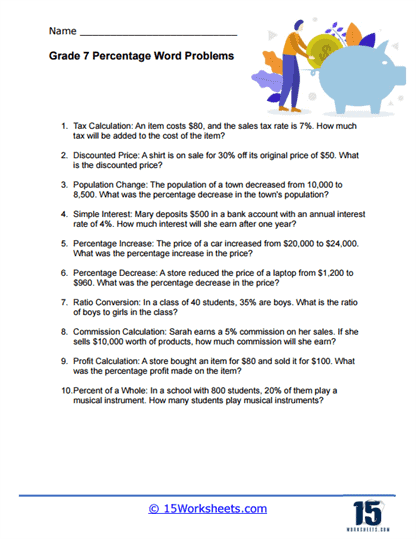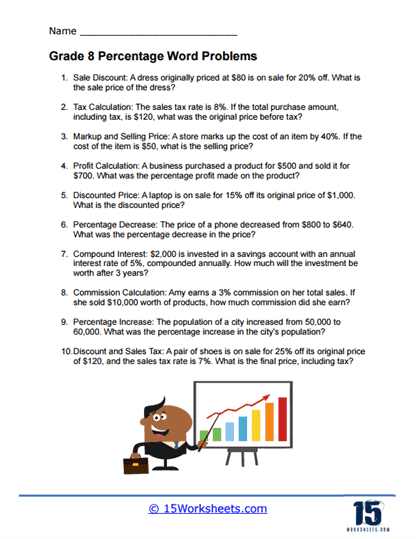Percentage Word Problems Worksheets
What Are Percentage Word Problems?
Percentage word problems involve situations where you are dealing with percentages. A percentage is a way of expressing a number as a fraction of 100. In these problems, you’re usually asked to find a number when the percentage of that number is given, to calculate the percentage of a number, or to adjust a number by a certain percentage.
By working through percentage word problem worksheets, students not only reinforce their understanding of percentage concepts but also develop critical thinking and problem-solving skills. They learn to apply mathematical principles to practical contexts, improving their ability to calculate percentages accurately and make informed decisions based on percentage values.
Percentage word problem worksheets are a valuable tool for educators to assess students’ comprehension of percentage concepts and their ability to apply percentage principles to real-life scenarios. These worksheets can be used in the classroom to reinforce lessons, as homework assignments, or as part of standardized test preparation to ensure students have a strong foundation in percentage calculations.
Examples of Percentage Word Problems
Find the number given its percentage:
Problem – If 30% of a number is 60, what is the number?
Solution – If 30% (or 0.30 when expressed as a decimal) equals 60, you can find the number by dividing 60 by 0.30. The number would be 200.
Find the percentage of a number:
Problem – What is 20% of 200?
Solution – To find the percentage, you multiply 200 by 20% (or 0.20). The result would be 40.
Adjust a number by a certain percentage:
Problem – Increase 150 by 10%.
Solution – To increase a number by a percentage, calculate the percentage of the number and then add it to the original number. So, 10% of 150 is 15 (150 * 0.10). Adding that to the original number, the result would be 165.
These are just some examples, and there are many other types of percentage word problems. They can often be solved by setting up an equation that represents the situation described in the problem.
What Types of Jobs and Careers Solve Percentage Word Problems Regularly?
Financial Analyst – Financial analysts often deal with percentages when analyzing and interpreting financial data. They calculate growth rates, profit margins, return on investment (ROI), and other financial metrics that involve percentages.
Statistician – Statisticians work with percentages when analyzing data and conducting statistical research. They calculate proportions, percentages of change, confidence intervals, and other statistical measures that involve percentages.
Market Research Analyst – Market research analysts use percentages to interpret survey results, market share data, and consumer behavior patterns. They analyze data to determine market trends, customer preferences, and the effectiveness of marketing campaigns.
Accountant – Accountants work with percentages when calculating taxes, depreciation, interest, and financial ratios. They analyze financial statements, create budgets, and provide financial advice based on percentage-based calculations.
Actuary – Actuaries use percentages to assess and manage risk in insurance and finance industries. They calculate probabilities, determine insurance premiums, evaluate investment strategies, and analyze demographic data.
Data Analyst – Data analysts work with percentages to analyze and interpret large datasets. They calculate growth rates, customer acquisition rates, conversion rates, and other performance metrics that involve percentages.
Economist – Economists often work with percentages when analyzing economic indicators, such as inflation rates, unemployment rates, and GDP growth rates. They use percentages to compare data across time periods and regions.
Sales Manager – Sales managers use percentages to track sales performance, set targets, and analyze sales trends. They calculate sales growth rates, conversion rates, and sales commissions based on percentages.
Operations Manager – Operations managers use percentages to analyze productivity, efficiency, and quality metrics in manufacturing and service industries. They calculate defect rates, on-time delivery percentages, and other performance indicators.
Researcher – Researchers across various fields, including social sciences, health sciences, and education, often work with percentages when analyzing survey data, experimental results, and population statistics.


